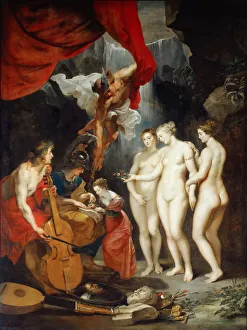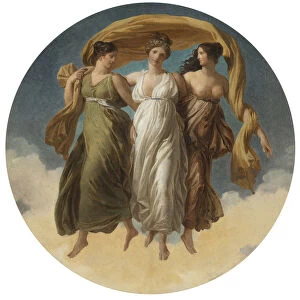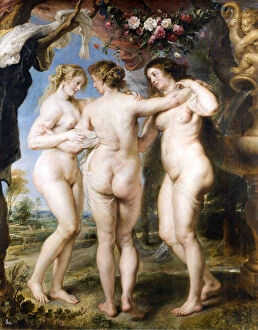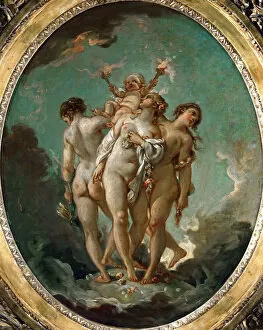Fertility Goddesses Collection
"Fertility Goddesses: Celebrating the Divine Feminine in Art" Throughout history
All Professionally Made to Order for Quick Shipping
"Fertility Goddesses: Celebrating the Divine Feminine in Art" Throughout history, artists have been captivated by the concept of fertility and its representation in various forms. One such depiction can be seen in "The Education of the Princess" from the Marie de Medici Cycle by Pieter Paul Rubens. This masterpiece showcases three enchanting figures known as "The Three Graces, " symbolizing beauty, charm, and fertility. Rubens's fascination with these goddesses is evident in another artwork titled "The Three Graces. " Painted around 1635, this piece exudes gracefulness and elegance as it portrays three ethereal women intertwined with each other. Their presence evokes a sense of abundance and prosperity, emphasizing their role as bringers of fertility. In classical antiquity, depictions were prevalent. The ancient Romans revered them through sculptures like "The Three Graces" from the 1st century. These divine beings embodied femininity and were believed to bestow blessings upon those seeking to conceive or nurture life. Rubens revisited this theme multiple times during his career, showcasing his mastery in capturing the essence of female divinity. His painting "The Three Graces" between 1620-1623 presents these goddesses radiating joy and vitality—a testament to their association with procreation and growth. Other renowned artists also found inspiration in portraying fertility goddesses throughout different eras. Hans Baldung's interpretation features "The Three Graces holding Cupid, " highlighting love's connection to creation. Francois Boucher's rendition depicts an idyllic scene where these graceful beings offer gifts to a young girl—an allegory for nurturing new life. Jean-Baptiste Regnault further immortalizes the allure through his work titled simply "The Three Graces. " With delicate brushstrokes, he captures their timeless beauty while reminding us that nature's cycles depend on their benevolent presence.












